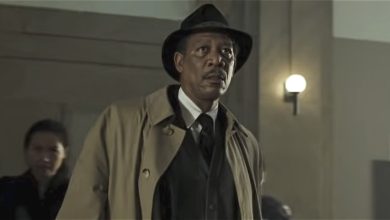Kingdom of the Planet of the Apes Review


Set a few centuries after the evolved ape Caesar’s (Andy Serkis) heroic sacrifice at the end of “War for the Planet of the Apes,” “Kingdom of the Planet of the Apes” exists at a post-apocalyptic midway point that’s distant enough from the last trilogy to imply proximity to the futuristic setting of the original film, but not close enough to alienate anyone who preferred the tone of Matt Reeves’ outings. Humans appear to have become a scarcer, less loquacious populace, while there’s been significant fragmentation in the ape community.
Noa (Owen Teague) is a young member of the Eagle Clan, a small village of apes who catch, raise, and train eagles as part of their culture. When we meet Noa, he is embarking on a seasonal ritual, claiming his own bird and growing into adulthood. But a chance encounter with feral human Mae (Freya Allan) and an invasion from the forces of Proximus Caesar (Kevin Durand) interrupt his provincial life and thrust him into the unknown. Principally, he has to reckon with the mysterious Caesar, his lost teachings, and the ways they have been perverted by Proximus and his ape followers.
Much of the action that ensues is of a different scale from what has come before it. Wes Ball has cited Mel Gibson’s “Apocalypto” as a big inspiration for this film, which explains how much of the thrills in “Kingdom” come from apes sprinting through jungles and fighting in brutal, unadorned skirmishes. There’s a patience and a sparseness to the pacing of the film’s unfolding mysteries that will surely tax some viewers, but the approach is executed surprisingly well.
It’s been a great year for Kong-sized spectacles after the surprisingly good “Godzilla x Kong: The New Empire,” but the beauty in the depiction of primates in “Kingdom of the Planet of the Apes” is in the nuance and detail of their performances and emotional expressions. Sure, the action is thrilling, but the real magic is in the medium shots and close-ups that allow the viewer to luxuriate in the intricate work the film’s VFX teams have done bringing these non-human characters to life. Mocap work has come a long way since even the cutting-edge “Rise of the Planet of the Apes,” and the groundwork Serkis has laid in the last 20 years is paying dividends. The result is a film that feels more emotionally immersive than any similarly effects-heavy picture this side of the “Avatar” films. But as marvelous as the effects are, there are some issues with the ideas these techniques are used to explore.




